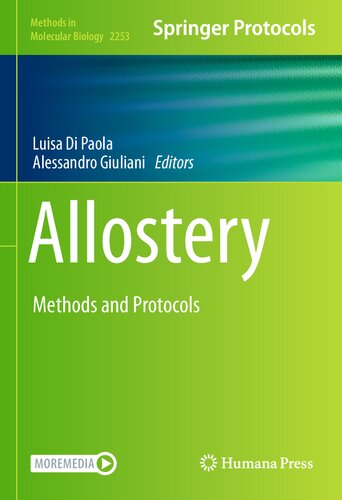

Most ebook files are in PDF format, so you can easily read them using various software such as Foxit Reader or directly on the Google Chrome browser.
Some ebook files are released by publishers in other formats such as .awz, .mobi, .epub, .fb2, etc. You may need to install specific software to read these formats on mobile/PC, such as Calibre.
Please read the tutorial at this link: https://ebookbell.com/faq
We offer FREE conversion to the popular formats you request; however, this may take some time. Therefore, right after payment, please email us, and we will try to provide the service as quickly as possible.
For some exceptional file formats or broken links (if any), please refrain from opening any disputes. Instead, email us first, and we will try to assist within a maximum of 6 hours.
EbookBell Team

4.1
70 reviewsThis volume explores the basic issues of “allostery” and “network” that are fundamental to studying this field. Chapters in this book look at how the basic “machine-like” proteins, that are similar to “human machines,” need to be organized, architecturally, to relate to different organizational layers. Chapters cover topics such as methodological/computational factors focused on links between allostery and network formalism; the presence of oscillating modes transversing the structure and underlying network wiring of the allosteric process; the “action at distance” by transduction of signals across an organized network structure; and the P53 protein located at the cross-road of cell cycle regulation, genome integrity, and cancer development. Written in the highly successful Methods in Molecular Biology series format, chapters include introductions to their respective topics, lists of the necessary materials and reagents, step-by-step, readily reproducible laboratory protocols, and tips on troubleshooting and avoiding known pitfalls.
Thorough and practical, Allostery: Methods and Protocols is a valuable resource for any scientists and researcher interested in learning more about this developing field.